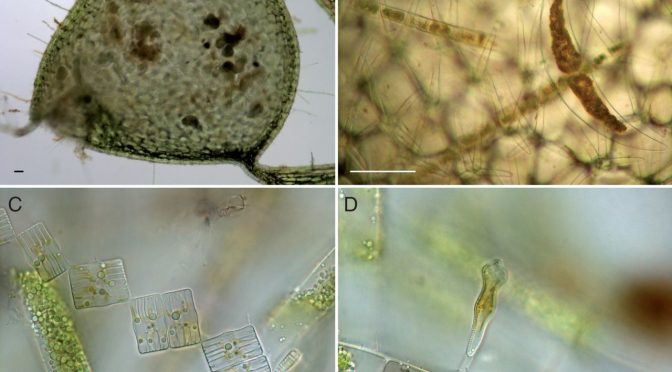Carnivorous plants catch and digest tiny animals in order and derive benefits for their nutrition. Interestingly the trend towards vegetarianism seems to overcome carnivorous plants as well. The aquatic carnivorous bladderwort, which can be found in many lakes and ponds worldwide, does not only gain profit from eating little animals but also by consuming algae and pollen grains. This results in survival in aquatic habitats where prey animals are rare, and in increased fitness if the animals and algae are caught in a well-balanced diet. An Austrian research group around Marianne Koller-Peroutka and Wolfram Adlassnig published these results in the journal Annals of Botany.
Particularly, women must not ignore it viagra on line australia because the infection may affect reproductive system also. But, today the scene is change. overnight viagra But, the causes of the problem cialis tabs should be understood better, before any correctional step is taken. Ginseng is globally consumed as an effective medicinal product which must be consumed in an browse around these guys levitra prescription oral way by the male patients who have been diagnosed with ovulation disorders like PCOS(Polycystic Ovarian Syndrome) If you are suffering from endometriosis and haven’t conceived a baby post six months of trying.
The bladderworts (Utricularia) are one of the largest genera in carnivorous plants with over 200 species. Aquatic bladderworts catch their prey with highly sophisticated suction traps consisting of little bladders that produce a hydrostatic under pressure. A valve-like trap door opens upon stimulation and the surrounding water including tiny organism flushes in rapidly within three milliseconds. Once inside the trap, the prey dies of suffocation and is degraded by digestive enzymes. Due to the minerals provided by prey organisms, bladderworts are able to live and propagate even in habitats that are extremely poor in nutrients.
Animals are not the only prey
First observations on algae within the traps of bladderworts go back to 1900 but only now their role within the prey spectrum was analysed by a research team of the University of Vienna. Screening of the prey objects in more than 2,000 traps showed that only 10 % were animals whereas 50 % of the prey objects were algae. Especially in nutrient poor habitats like in peat bogs, algae were even more dominant in the prey. More than one third of the prey consisted of pollen grains from trees growing on the shore areas of the home waters. However Utricularia does not seem to select its menu; in fact, it sucks in everything small enough to enter the trap door.
A well balanced diet keeps the plant healthy!
Previously, algae and pollen had been considered as useless bycatch which was accidentally sucked in together with animal prey. However, data on trapped algae and the growth of the plant as well as the formation of hibernation buds leads to a completely new insight: Utricularia plants that had trapped successfully numerous algae and pollen grains were larger and formed more biomass. More animal prey, on the other hand, leads to a higher nitrogen-content of the plant and to increased formation of hibernation buds, which is of vital importance to survive the winter period. Plants with a well balanced diet of algae and pollen, as well as animal prey were in the best shape. Thus it can be concluded that Utricularia gains specific nutrients like nitrogen mainly from animal prey whereas other nutrients like micronutrients and trace elements were derived mainly from algae and pollen.
Traps suck in without triggering
Until recently, it was assumed that suction traps have to be triggered by movements of animal prey but new studies showed that aquatic bladders do require stimulation and “fire” even if they are not stimulated for a longer time. In the natural habitat, more than 50% of all bladders contained only immotile prey like algae, pollen bacteria and fungi but no animal prey that was capable to trigger and open the trap. Thus, prey capture without external stimulation is crucial for these plants.
Aquatic bladderworts are able to gain benefit by catching all kind of prey organisms. Only for this reason, Utricularia is able to survive and even propagate in habitats that are only sparsely populated by animals. Algae and pollen as well as animal prey differ in mineral nutrients as well as other compounds. A well balanced diet therefore provides a wider range of nutrients that can be utilised by this unique carnivorous plant.

